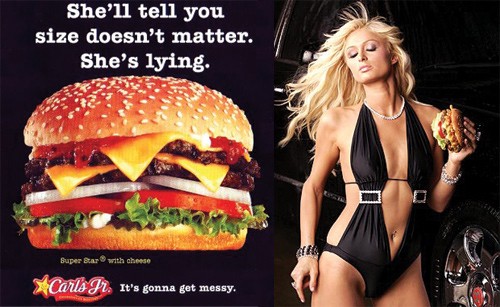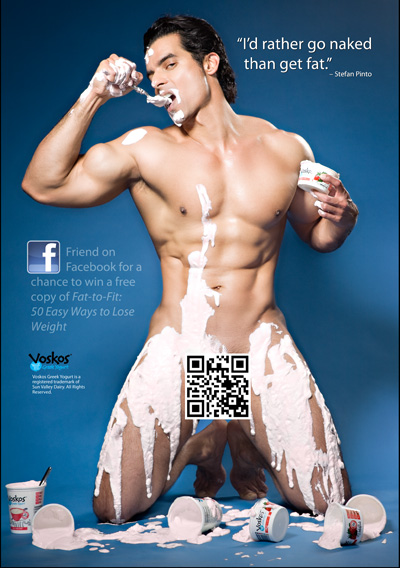Sex Sells (?): Using arousal in advertising

Advertising is about two things: attention and decision-making. I believe it’s clear that sex attracts attention. Naked men, women, suggestive poses, implied sex - all of it. Not as much as it did twenty years ago, and, of course, not nearly as much as fifty years ago.

Sex became overused in advertising. We don’t perceive it as a shock or as a taboo, or even something that stands out anymore. And yet, it attracts our attention on a basic level, the way food does. It’s a cliche to say we’re “biologically wired” to pay attention to these things, but, of course, we are. These are the basic needs that are never completely ignored.

This post will be more about how arousal - the ideal reaction to sexual ads - influences our decision-making. And, as it’s interesting and demonstrative and important to know, we’ll step back from buying behavior and go back to the research on other types of behavior. In this case, sex-related.
Arousal and behavior
In 2001, two researchers, Loewenstein and Ariely, decided to test how arousal influences decision-making. They invited college students (men only as it was agreed it’s technically easier to get male twenty-something college students aroused) to participate and gave them a questionnaire with a wide range of highly uncomfortable sexual questions.
Students were asked to first imagine they are aroused and predict their behavior in that situation. Some questions were on their sexual preferences (e.g., Could it be fun to have sex with someone who was extremely fat? Could having sex with someone he hated be enjoyable?), some were related to moral decision-making (e.g., Would he encourage a date to drink to increase the chance that she would have sex with him? Would he keep trying to have sex after the date had said "no"?) and the third part was related to engaging in behavior of unsafe sex (Would he always use a condom if he didn't know the sexual history of a new sexual partner? Would he use a condom even if he was afraid that a woman might change her mind while he went to get it?).
Then, some time later, these same students were asked to complete the second part of the experiment. Men were answering the same questions while being in their room, watching naked women, in the “hot state”. Results? Participants’ desire to engage in unusual sexual activities was 72% higher than they had predicted when they were doing the questionnaire. For example, sex with animals seemed twice as appealing. Their decisions on moral questions were affected even more - much more. The rate of performing an immoral activity in a hot state was 136% higher than they had predicted. In relation to condoms, participants were 25% more likely in the aroused state than in the cold state to predict that they would forego condoms.
The conclusion here is this: the influence of the arousal on our decision-making is huge, and we’re unable to predict the extent to which it affects our preferences, morality, and approach to safety. Passion has the power that we greatly underestimate.
Arousal and advertising
Now back to advertising. As we know, sexual content is used a lot. It’s mostly used to drive purchases of “pleasurable” products: alcohol, cars, food, pretty clothes, etc., but more often than you’d expect, you will see a half-naked model showcasing a printer or a bottle of olive oil. Sometimes, marketers are just unstoppable.

Now imagine you’re a scientist. You have to predict how a sex ad will perform according to this tiny amount of research that’s been done and talked about in the first half of this post. Firstly, and most importantly, the research conducted was only on sex-related questions. Nothing shows that arousal will drive you to buy food or a new TV (unless, maybe, you can make these sex-related in an authentic way?). Research shows that you are more likely to say “yes” to questions (and items) related to sex.
This translates to product advertising. Sex is indeed effective in selling products related to sex. These can be underwear, sex toys, sex performance enhancers, etc.


In other cases, they might actually hinder your performance. First, because, research shows that sex ads appeal to men while offending women. This might change in the future when sex ads will be less gender-biased, but at the moment, even brands that supposedly target both genders use much more female than male models. And, let’s face it, some of these ads are truly cringey.

Second, when sexual ads are used to sell unsexy product, they apparently (however, unsurprisingly) distract the user from the product. To understand that better, remember the arousal research. Imagine, participants are offered to buy a sex toy during the experiment. Would they agree? Most likely, knowing how their preferences suddenly included everything. Now imagine they are offered to buy a new TV. Wouldn’t they be a bit distracted to appreciate it?
This is why, a meta-analysis of 78 peer-reviewed studies conducted in 2017 showed that when it comes to sex ads, consumers remember the sex ads. They don’t, however, remember the product, nor do they feel like buying it straight away.
Conclusion:
1. If you don’t sell sex-related products, think twice before using sexual ads.
2. If you sell sex-related products and your target audience includes both genders, do your best to appeal to both. And in any case, test your ad with a maximum number of people of both genders. Your brand won’t benefit from offending half of the population or simply being cringeworthy.
3. Unrelated to marketing, remember that arousal affects people much more than they are able to predict (ads are all good, but sometimes it’s fun to learn something new for our off-marketing life).
Got any questions or comments? Ask away!













